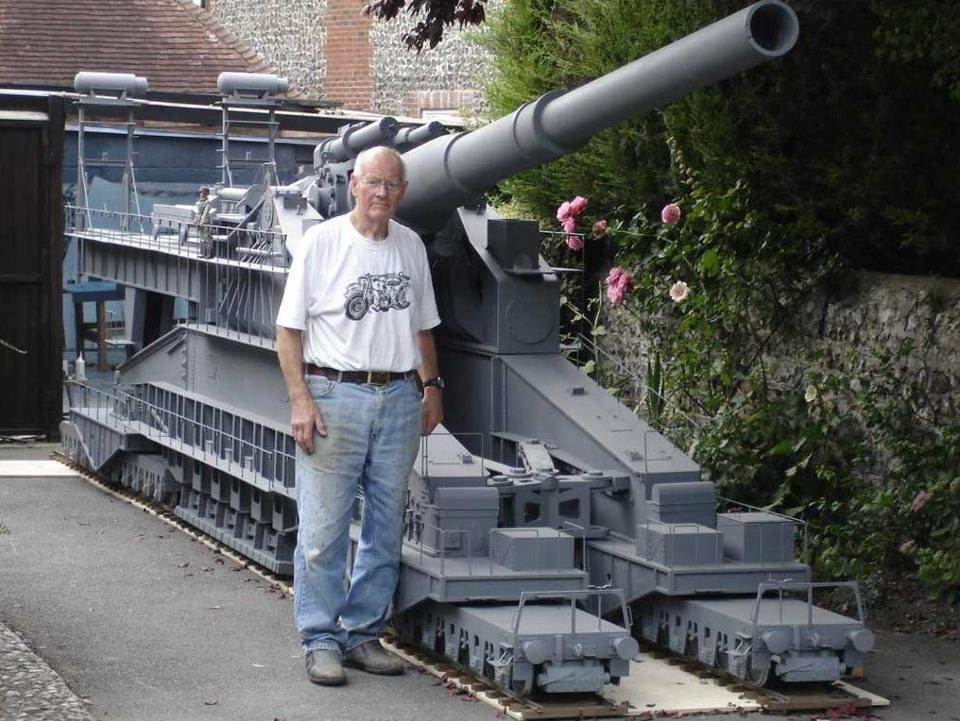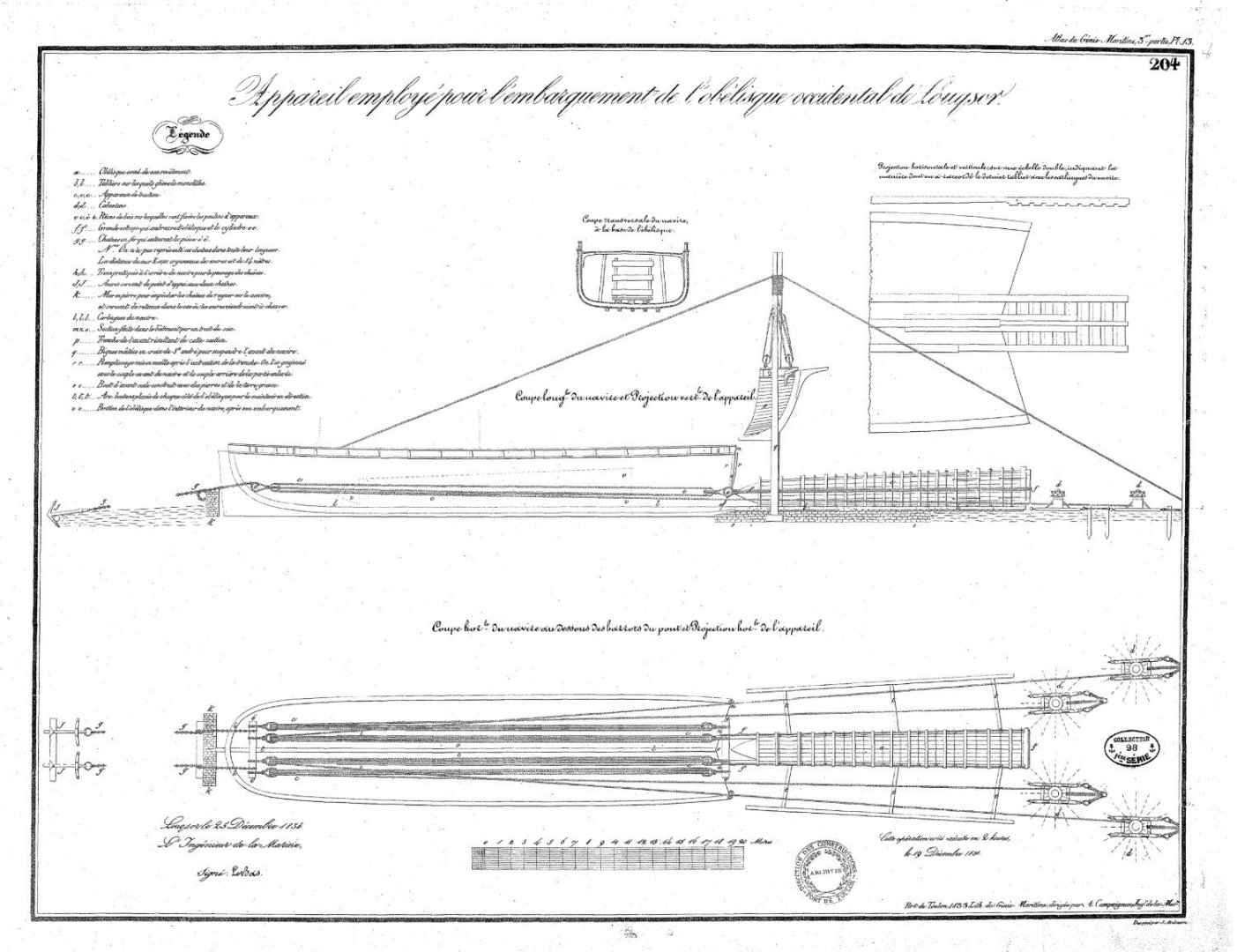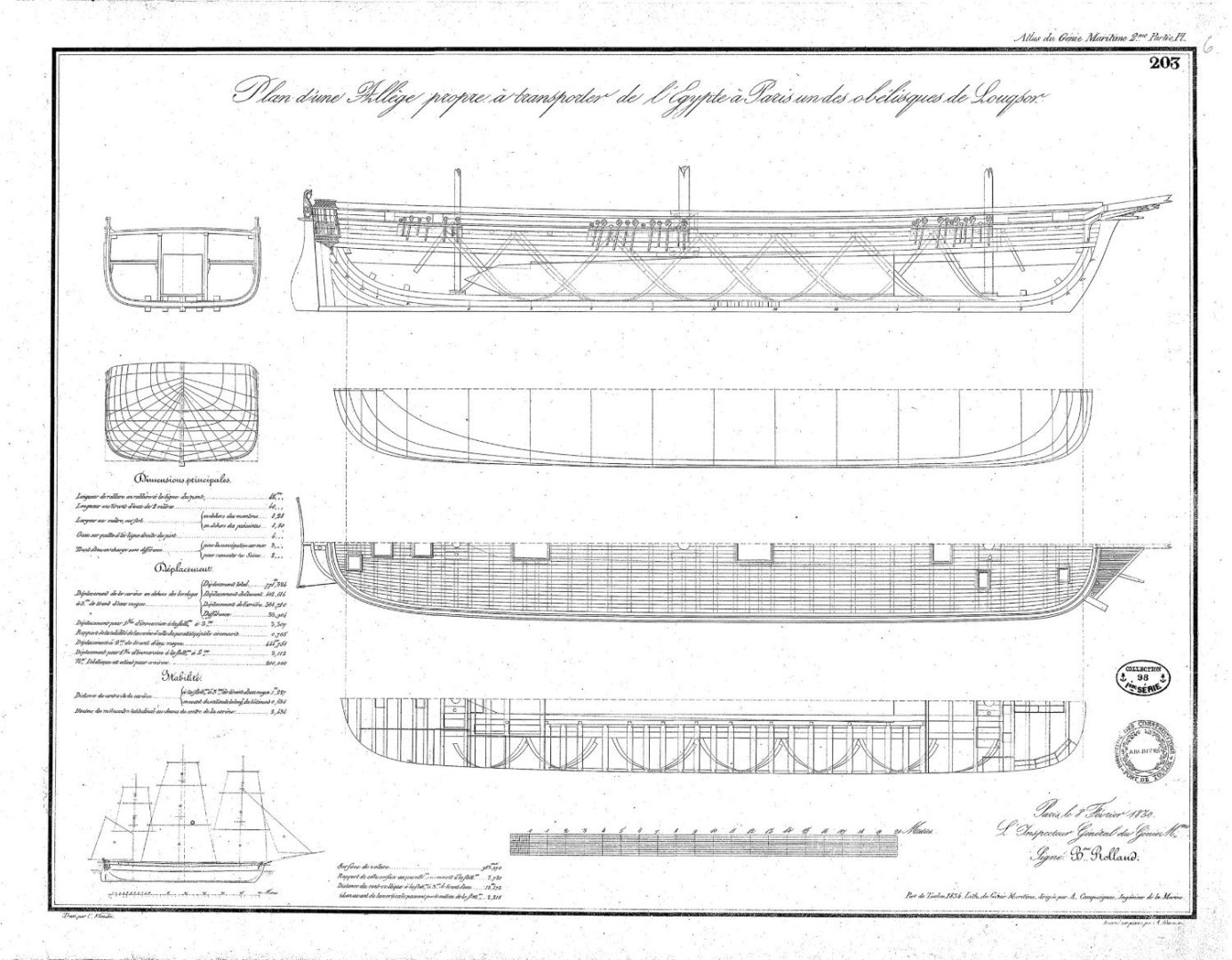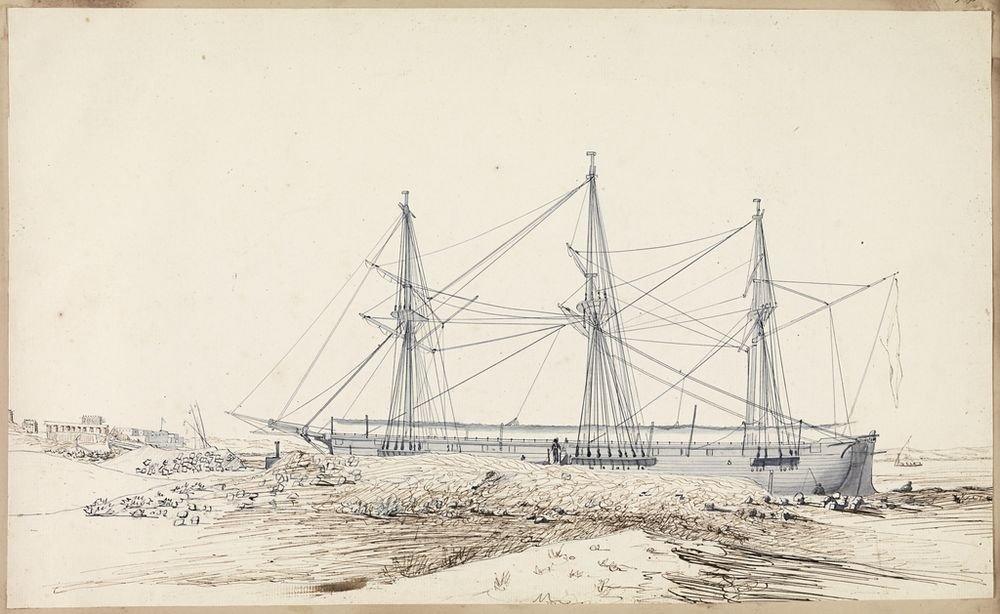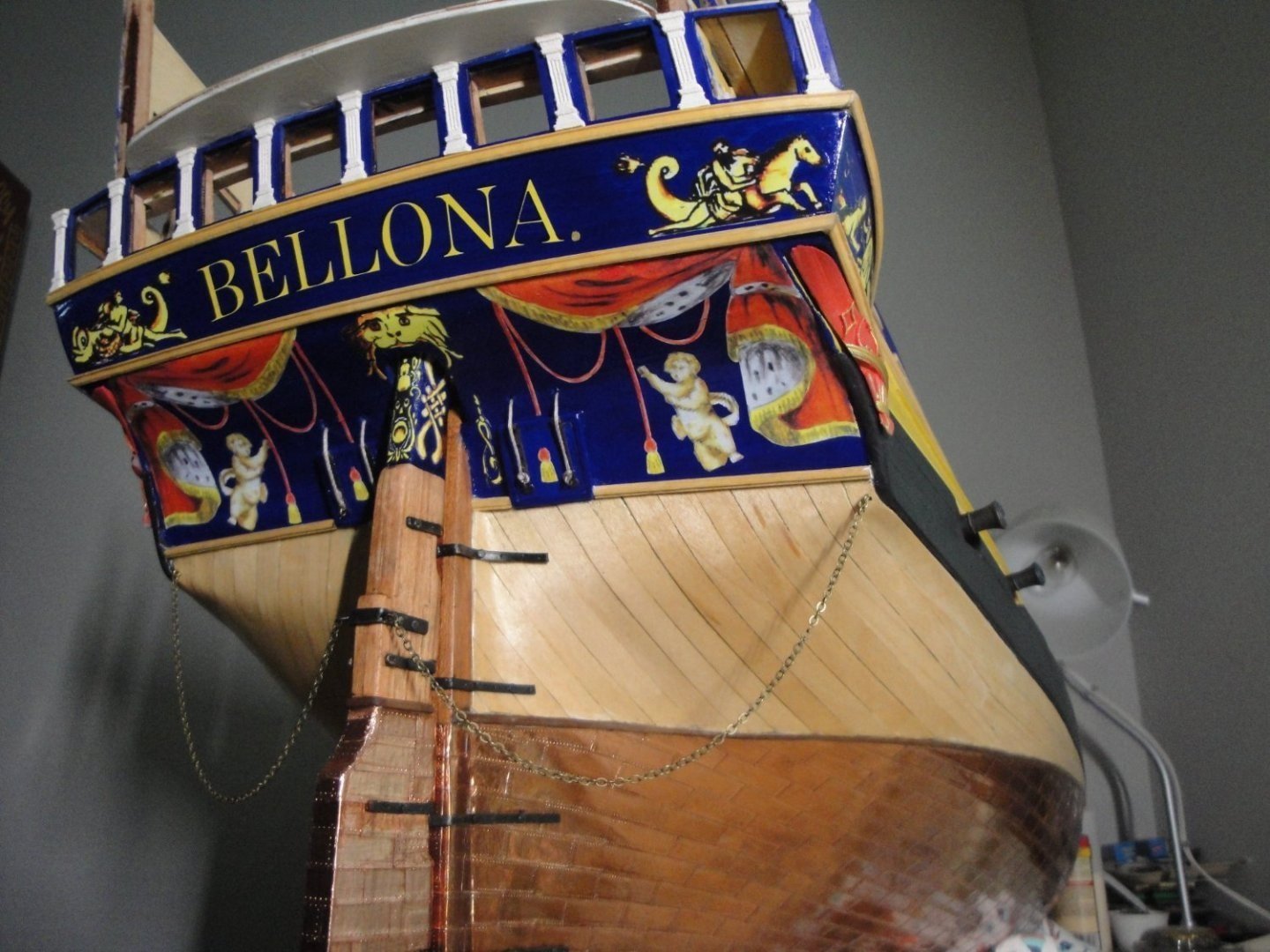-
Posts
3,593 -
Joined
-
Last visited
Content Type
Profiles
Forums
Gallery
Events
Everything posted by yvesvidal
-
What a fine and racy model! The bowsprit in itself, doubles the length of the ship. It exudes elegance and performances. Yves
- 80 replies
-
- Grecian
- Vanguard Models
-
(and 3 more)
Tagged with:
-
Superb with its sails. What a comeback for this model !!!! Yves
- 84 replies
-
- Corsaro II
- Corel
-
(and 1 more)
Tagged with:
-
Great kit and fantastic boat. We will be following your progress with enthusiasm. Yves
- 122 replies
-
- Artesania Latina
- Pen Duick
-
(and 1 more)
Tagged with:
-

Barncave Shipyard by mbp521 - Scale 1:1
yvesvidal replied to mbp521's topic in Non-ship/categorised builds
Brian, You are preparing for yourself a nice workshop! Congratulations. However, I do not see any space for piling up and hoarding kits of all kinds.... You need more shelves for future kits !!! 🙂 Yves -
I would add a little bit of rigging. Just the main lines holding the masts will go a long way to finish your model. Yves
-
6) Boomkins and railings: We are almost done and must focus on the boomkins and railings of the bow: The railings are made with 0.8 mm brass wire (not included in the kit), soldered in their middle and painted cannon black. Finally, a couple of overall views of the progress: I hope you have enjoyed that sequence of building. I cannot convey enough the relief and the joy to have this delicate section behind me. Yves
-
5) Now it is time to install the gratings and "seats of ease". I love that term as really there is no ease with these holes located on top of the sea. I have to admit that once in my life (and only once), I would not mind sitting on one of these and watch the sea flow by under me. That must be quite a sight and incredible feelings. When there are waves and the ship is sailing close to the wind (I know they cannot do that), it must be interesting to seat there.... All the gratings is done with cherry wood. The instructions are absolutely useless, the kit parts are not symmetrical for both sides and a lot of personal solutions have to be deployed if you want to be successful. Cutting all these pieces of wood, filing them in shape is not funny: Above, you can verify that the holes of the Seats of Ease are actually going directly to the water, without hitting anything else on their majestic falls. That took a lot of patience and the parts were fitting more or less. The rest is pure improvisation ..... You can get all the latest marine gossips, when nature calls.... Yves
-
4) At this stage and since the Main Rail Heads are in place, we can finish the Forecastle with all its intricacies: You will notice that I fabricated a "scroll" with a piece of boxwood, connected that scroll to the tip of the main bracket and to the two main rails. The assembly is now very sturdy, decent and provides the "headrest" shape for the Figurehead, that we see on the original model. Yves
-
3) It is time to worry about the Knightheads, securing the bowsprit. In the kit, these are placed on top of the gratings, which does not make any sense and is not at all realistic. The knightheads are part of the hull framing and must be strong to fulfill their role. I used a piece of cherry of 3 mm thick and glued it strongly to the bow assembly: This gives me more surface and and a good anchors to glue the knightheads. These are filed to accomodate the diameter and orientation of the bowsprit: I know they are still hanging in the air, but that is the best I could do with this kit. Et voila. I am feeling a lot better, now that this delicate assembly is behind me. Yves
-
2) Second part of the bow assembly: the rails !!! I really suffered to come up with something decent. I think I partially succeeded in the following way: Above are the main rails, which are a continuation of the Main rail heads. These are carved by CAF Model and I have to say they did a very good job. First, we need to install the Heads after making sure that the entire head + rail fits correctly, all the way to the scroll. The section where the Head will be installed is shown below: The Head is then glued. For most of this delicate tasks, CA glues of various viscosity are your best friends. Then the main rail is glued only on the side of the Head (lower portion): This gives a tiny bit of flexibility to install the lower and middle rails as well as the head and cross beams. That is the really delicate part of the assembly. We do the same on the other side, which is a lot easier once we have a technique. The main rail is still "floating" near the scroll. Yves
-
A few more progress on the bow. I have to say that this was probably one of the most delicate and difficult tasks of the entire kit. I am so happy that it is behind me.... And of course, the instructions are not really there to help you. I know CAF Model rates this kit as MASTER.... I am not a MASTER and thus I suffer a lot. Here is how I I did it: 1) first the assembly of the roundhouses. The kit calls for two pieces of plywood to be used for the curved walls. Nonsense ! Maybe in China they bend plywood in warm water, but on this side of the lake, it does not work. Instead I used the 0.5 mm x 8 mm planks and cut them in two or three pieces. They are then painted and glued to the front bulkhead: Yes, the holes are there....hard to see, but the excrement can be evacuated to the sea. After that, it is time to install all the ornamentation and trims: And some decals.... Below, I made a big mistake (I was trying to follow the CAF Model instructions and pictures): the lion and horse are installed way too low: These two decals should be pushed as much as possible to the top. They will be partially covered by the rails, later on.... Argh !!! One of many mistakes... Yves
-
Very interesting design and technology for an XVIII century vessel. It must have taken some strong arms, to lift these keels up.... Chris, if you are looking for unusual ships to model, there is a guy on that French forum who is building the vessel (Le Louxor) that was used to carry the Egyptian Obelisk all the way to France: https://www.laroyale-modelisme.net/t28885-allege-le-louqsor-partie-1-scratch-1-50-de-jm-mai33 That would do a very unique vessel and could offer a fantastic diorama depicting the loading (or unloading) of the Obelisk. Yves
- 57 replies
-
- Trial
- Vanguard Models
-
(and 1 more)
Tagged with:
-
I have a question for the experts: The stove is usually crowned by an angled chimney stack, protruding on the forecastle. I am wondering about the orientation of that stack. I am assuming that since these large ships were traveling rear wind most of the times, it would make sense to point the egress side of the stack towards the bow. This way, the smoke would fly away and not stink up the ship. Is my reasoning correct? Yves
About us
Modelshipworld - Advancing Ship Modeling through Research
SSL Secured
Your security is important for us so this Website is SSL-Secured
NRG Mailing Address
Nautical Research Guild
237 South Lincoln Street
Westmont IL, 60559-1917
Model Ship World ® and the MSW logo are Registered Trademarks, and belong to the Nautical Research Guild (United States Patent and Trademark Office: No. 6,929,264 & No. 6,929,274, registered Dec. 20, 2022)
Helpful Links
About the NRG
If you enjoy building ship models that are historically accurate as well as beautiful, then The Nautical Research Guild (NRG) is just right for you.
The Guild is a non-profit educational organization whose mission is to “Advance Ship Modeling Through Research”. We provide support to our members in their efforts to raise the quality of their model ships.
The Nautical Research Guild has published our world-renowned quarterly magazine, The Nautical Research Journal, since 1955. The pages of the Journal are full of articles by accomplished ship modelers who show you how they create those exquisite details on their models, and by maritime historians who show you the correct details to build. The Journal is available in both print and digital editions. Go to the NRG web site (www.thenrg.org) to download a complimentary digital copy of the Journal. The NRG also publishes plan sets, books and compilations of back issues of the Journal and the former Ships in Scale and Model Ship Builder magazines.






